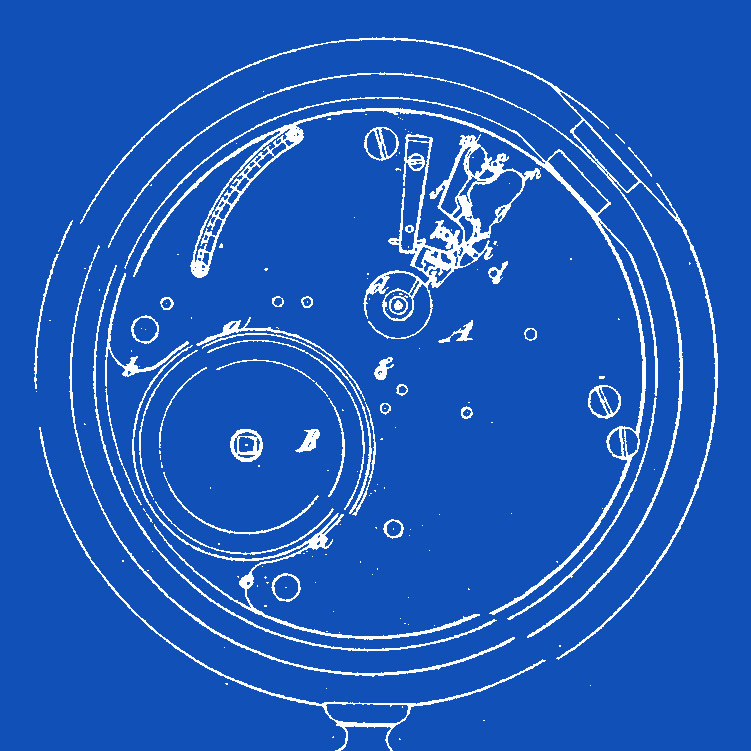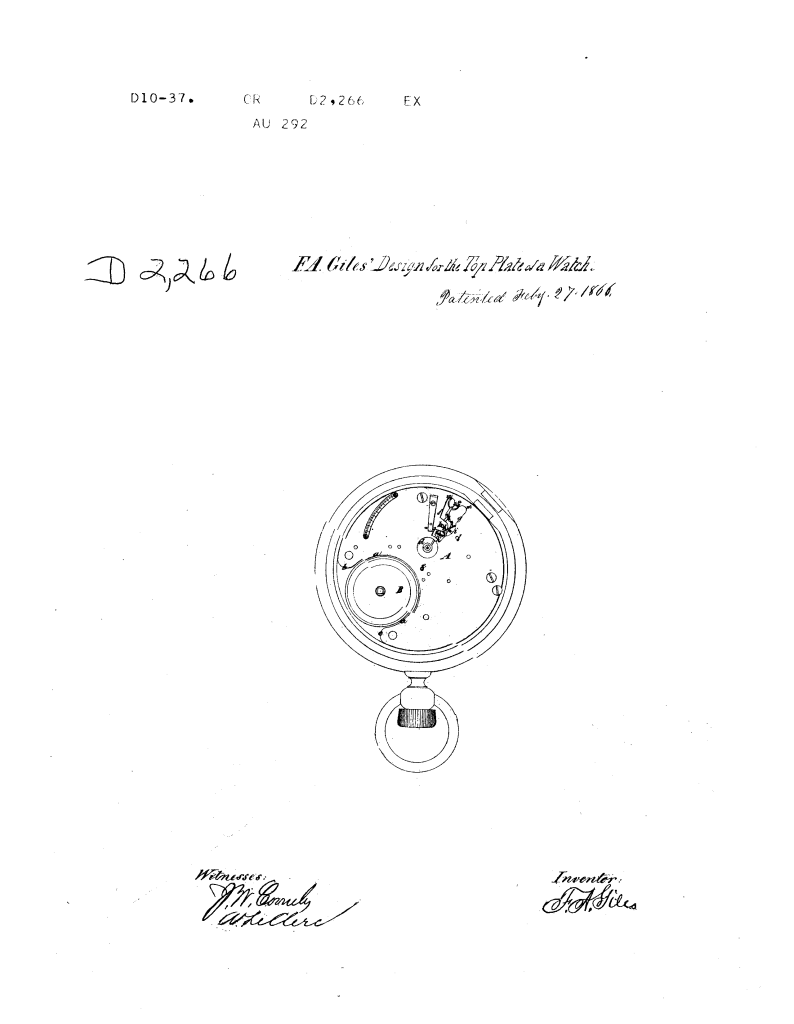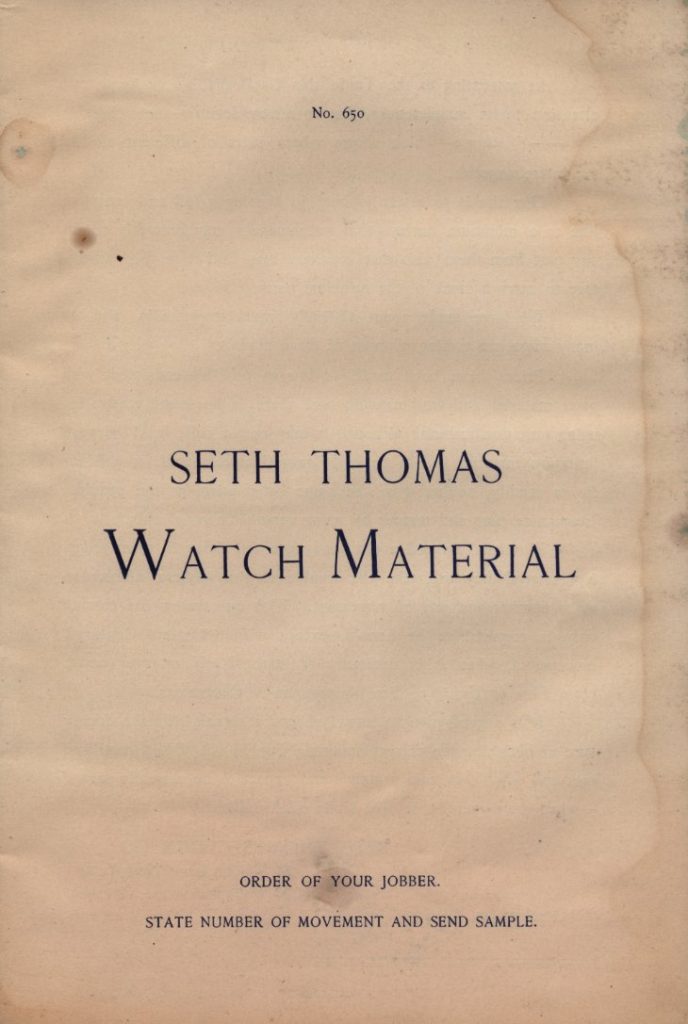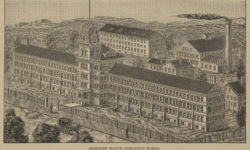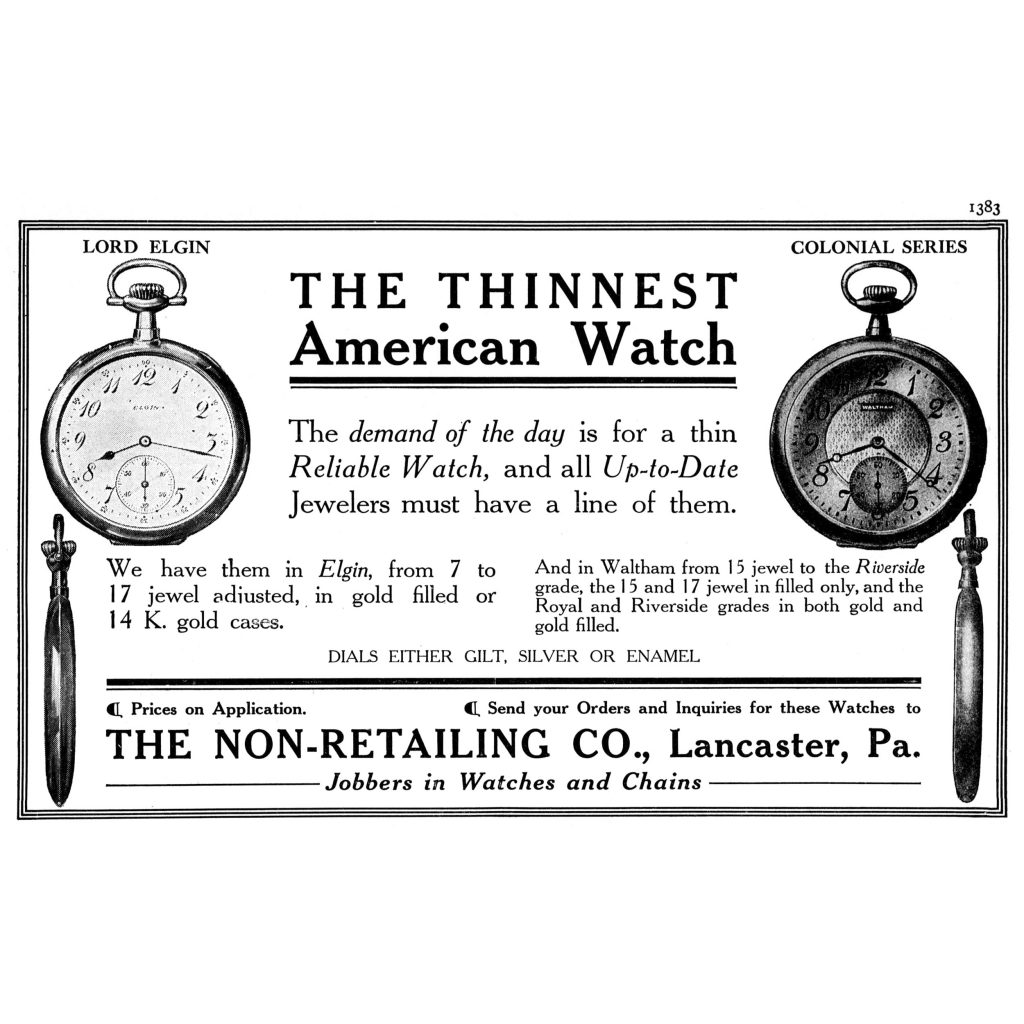The First Cutout Plate Design Patented by Frederick A. Giles for the United States Watch Company
In early 1866, Frederick A. Giles received two separate patents for watch plate designs – one would become the iconic “butterfly cutout” that collectors associate with watches from the United States Watch Company (Marion), while the other was never used in general production.
Giles patented his butterfly cutout plate in March 1866, approximately two weeks after his first design. Both creations featured cutouts to expose the escapement through the top plate. The butterfly cutout, or double “crescent” shaped cutout (as described by Giles), is an exceptional design that exudes elegance and class. In contrast, his first design would not receive the same level of praise.
Giles’ February patent featured a cutout design above the escapement that is rather unshapely, emphasizing function over form. The aperture served a very practical purpose in both cases, extending beyond providing a view of the escapement. It also allowed the watch to be easily adjusted for precise timekeeping.
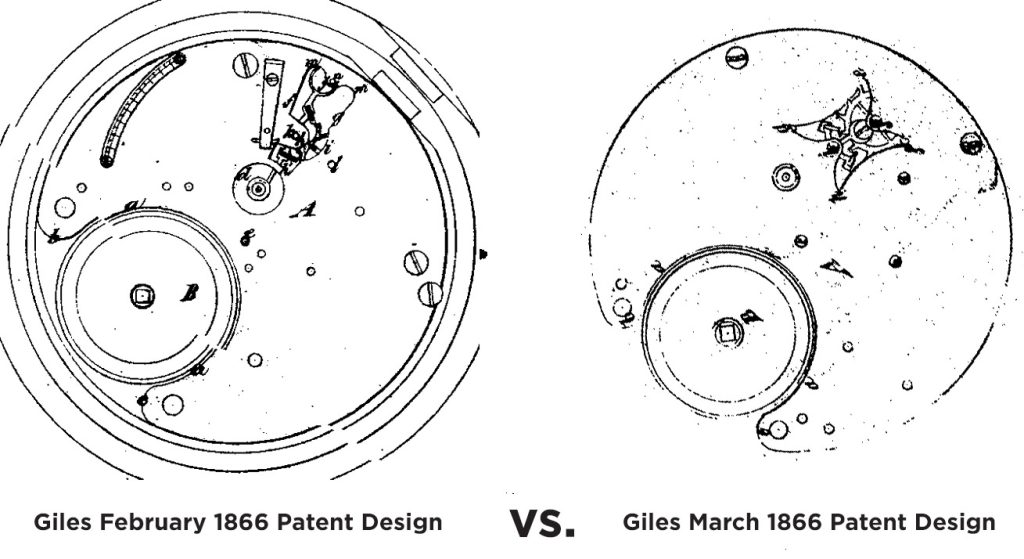
While the first patent application is very similar to Giles’ more familiar design, the illustration exhibits a movement with a right-angle escapement instead of a straight-line escapement. Additionally, various traits of the movement are distinguished from the illustration provided in the March patent, suggesting the February patent might represent one of the experimental models that never made it into production.
The tooling and modeling work was occurring behind the scenes during this time as the United States Watch Company was anticipating its introduction to the market. When the company launched its first product line, the model with the butterfly cutout design was used, representing the first time an escapement was visible through the top plate on an 18-Size watch from an American watch company.

